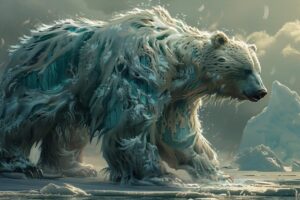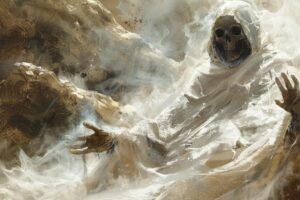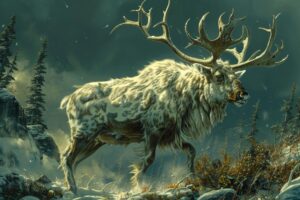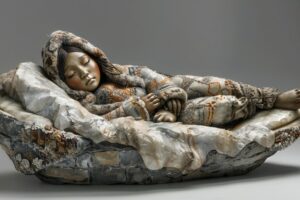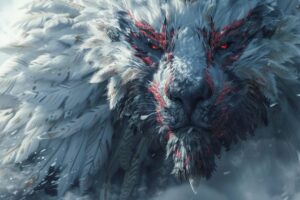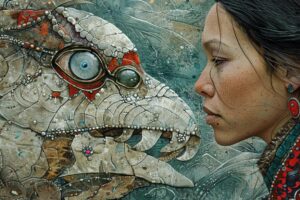Sedna Inuit Goddess: Exploring the Story of the Sea Goddess
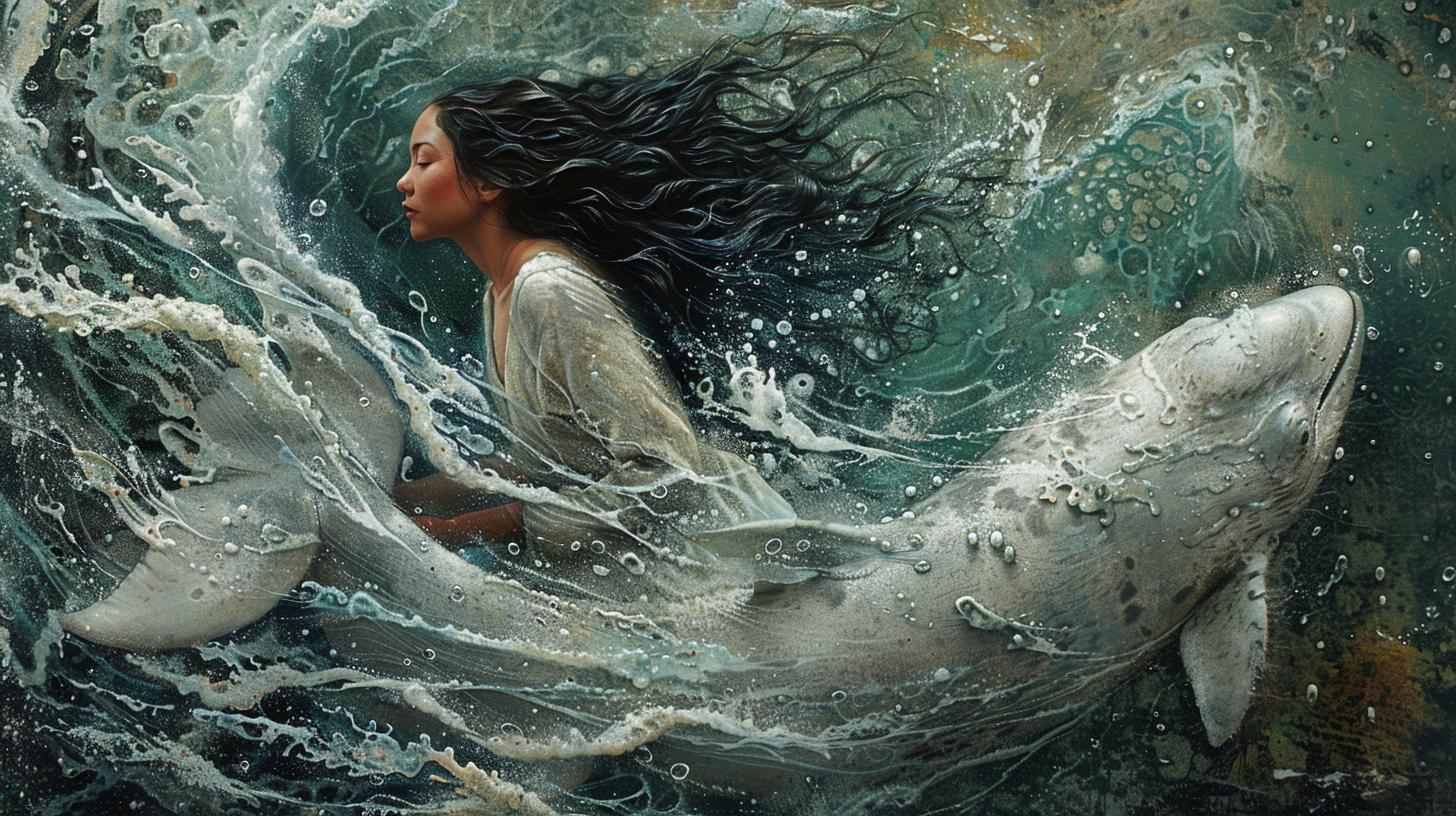
The legend of Sedna, the Inuit goddess of the sea, has been passed down through generations. Sedna controls the availability of marine animals for Inuit hunters. In one version of the story, she becomes the mother of all sea creatures after a tragic fate with her disguised husband.
Her tale serves as a lesson in responsible hunting and living in harmony with nature. Sedna’s significance in Inuit culture is profound, reflecting a deep connection to the natural world.
The Legend of Sedna Inuit Goddess
Sedna, the Inuit goddess of the sea, holds a prominent place in Inuit mythology with a captivating origin story that delves into the depths of creation and transformation.
Origins of Sedna in Inuit Mythology
- Sedna’s mythical roots intertwine with the cultural fabric of the Inuit people, symbolizing the fusion of spirituality and nature.
Creation Story of Sedna
- The narrative surrounding Sedna’s origins explores the intricate web of relationships between humans, animals, and the natural world.
Sedna’s Role as the Sea Goddess
- As the sea goddess, Sedna wields a profound influence over the availability of marine creatures, shaping the livelihoods of Inuit hunters through her divine power.
Sedna’s Influence on Animal Availability
- The ebb and flow of marine life are intricately connected to Sedna’s will, emphasizing the delicate balance maintained between mankind and the oceanic realm.
Sedna’s Transformation
- Sedna’s tale unfolds with themes of betrayal, resilience, and ultimate metamorphosis, symbolizing the cyclical nature of life’s trials and transformations.
Sedna’s Marriage and Fate
- Her ill-fated union and subsequent descent into the sea reflect the transformative journey towards divinity and empowerment.
Sedna’s Descent into the Sea
- The poignant moment of Sedna’s plunge into the depths signifies a profound shift in her existence, heralding her elevation to the revered status of sea goddess.
Sedna’s Significance in Inuit Culture
- Within Inuit culture, Sedna represents a teacher and guardian, imparting essential lessons on respect for the natural world and the interconnectedness of all beings.
Sedna’s Lesson for Inuit Hunters
- Inuit hunters heed Sedna’s wisdom, acknowledging the sanctity of the hunt and the need for sustainable practices to maintain harmony with nature.
The Shamanic Journey to Sedna
The shamanic journey to Sedna involves a unique spiritual process that plays a pivotal role in Inuit mythology and culture.
The Role of Inuit Shamans
Inuit shamans hold a revered position within their community, serving as intermediaries between the human and spirit worlds.
Journey to the Underwater World
Inuit hunters embark on a mystical journey to the depths of the sea, where they seek to connect with Sedna, the powerful goddess of the ocean.
Transformation of Hunters into Fish
During their encounter with Sedna, the hunters undergo a profound metamorphosis, symbolically transforming into fish to reach the submerged realm where the sea goddess resides.
Sedna’s Connection to Nature
Sedna, the Inuit goddess of the sea, symbolizes a delicate balance in the natural world. Her representation as the goddess of the ocean highlights the interconnectedness of all living beings.
Sedna as a Symbol of Balance
As a deity with dominion over marine life, Sedna embodies the harmonious relationship between humans and nature.
The story of Sedna serves as a reminder of the delicate equilibrium required for sustainable living.
Inuit Relationship with the Environment
- The Inuit people have a profound respect for the environment, viewing it as a source of life and sustenance. Their traditional practices are deeply rooted in sustainability and conservation.
- Harmony with nature is central to Inuit culture, with teachings passed down through generations emphasizing the interconnectedness of all living beings.
- Inuit communities rely on the bounty of the sea for survival, fostering a deep connection to the ocean and its inhabitants.
- Rituals and ceremonies are performed to honor the spirits of the sea and maintain a respectful coexistence with the natural world.
Power and Compassion of Sedna
Sedna’s Influence on Inuit Traditions
Sedna, the Inuit goddess of the sea, holds significant influence on Inuit traditions.
Her power and compassion are reflected in various rituals and offerings made to honor her presence.
Rituals and Offerings to Sedna
- Feasts are organized in Sedna’s honor, with offerings of freshly caught fish and marine delicacies.
- Special ceremonies involve songs and dances to invoke Sedna’s blessings upon the hunters and their communities.
- Artisans create intricate carvings and sculptures depicting Sedna and her underwater realm as acts of reverence.
- Shamans undertake spiritual journeys to communicate with Sedna and seek her guidance in times of need.
The practice of ritualistic offerings to Sedna remains a vital aspect of Inuit cultural identity, reinforcing the bond between the community and the sea goddess.
Impact of Sedna’s Story Today
The legend of Sedna, the Inuit goddess of the sea, continues to resonate in contemporary society, sparking conversations about environmental stewardship and indigenous wisdom.
Contemporary Interpretations of Sedna
Artists, writers, and scholars draw inspiration from Sedna’s tale, exploring themes of resilience, sacrifice, and the interconnectedness of all life.
Sedna’s Relevance in Modern Society
- Environmental activists reference Sedna’s story to advocate for marine conservation and sustainable hunting practices.
- Psychologists analyze Sedna’s narrative as a metaphor for personal transformation and overcoming adversity.
- Indigenous communities celebrate Sedna as a symbol of cultural heritage and spiritual resilience in the face of colonization.
Sedna’s Representation in Art and Literature
Depictions of Sedna in Inuit Art
Inuit art reflects the cultural significance of Sedna, portraying her as a powerful deity intertwined with the sea.
Artists capture Sedna’s essence through intricate carvings and sculptures, depicting her as a central figure in Inuit mythology.
Sedna’s Depiction in Inuit Stories
In Inuit stories, Sedna is often depicted with flowing hair symbolizing the marine creatures she commands. Artists bring these tales to life through vibrant illustrations, showcasing Sedna’s transformative journey from a mortal woman to a divine sea goddess.
Sedna’s Legacy
Exploring the lasting impact of Sedna, the Inuit goddess of the sea, reveals a profound connection to the ocean and nature that transcends generations.
Continuing Influence of Sedna
Sedna’s legacy endures through the teachings of respect for the ocean and its inhabitants. Her story serves as a reminder of the delicate balance between mankind and the natural world.
Respecting the Ocean and Nature
- Honoring the interconnectedness of all living beings
- Practicing sustainable hunting and fishing methods
- Preserving marine ecosystems for future generations
Exploring the Depths of Sedna’s Story
Delving deeper into Sedna’s narrative reveals the intricate layers of her myth and symbolism in Inuit culture.
Her tale transcends mere folklore, offering profound insights into the interconnectedness of humanity and the natural world. Through an exploration of Sedna’s story, we unravel the complexities of human relationships with the environment and the delicate balance that must be maintained.
- Sedna’s story underscores the significance of respecting the ocean and all its inhabitants, emphasizing the need for sustainable hunting practices and environmental stewardship.
- By dissecting the legends surrounding Sedna, we uncover timeless lessons on compassion, power dynamics, and the enduring legacy of ancient traditions.
- Artists and writers throughout history have drawn inspiration from Sedna, immortalizing her essence in various forms of artistic expression that continue to captivate audiences today.
.












